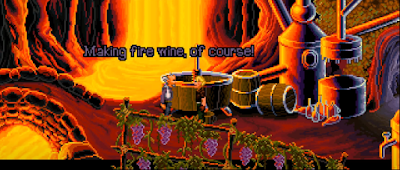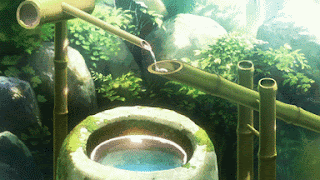And when I say one roll combat, I mean to talk about when to hit and damage are resolved with a single roll.
I am aware that making them a separate thing has its reasons, for example modelling fictionally different weapons or abilities. But as a game, one roll makes things smoother and easier, so I always implement that rule in one way or the other. But there are different ways to do it, and each way bends the combat math in a particular way.
Option A: There is the Into the Odd approach.
Every turn you roll damage and you always hit; but armor soaks some damage. If we assume that the average damage per turn is equal to common DnD, this means that you will deal less damage every turn, but more constantly as there are lower peaks (1d6 damage can deal 6 damage if you hit; but if armor soaks 2 damage per turn, you will do damage 4/6 of the time, but can only deal 4 as a maximum).
What does this mean? Well, this means that incresing the damage output of a weapon also increases it's capability to hit, and viceversa. This can be good or bad, depending on many factors. Also, it might seem like a minor nuisance, but it will take more pencil-writing time for GM and players as there are more and smaller "damage transactions" and displace the thrill of a big hit. Also, converting monsters and PCs to this numbers so the power levels are similar requires to ponder a lot of factors. Non- damaging attacks that require a to-hit roll can still be done by making an additional save vs effect.
Necropraxis "Degree of success as damage" and Blackrazor's "Auto-Hits" are two more essays on this approach.
Option B: Fixed damage.
To make it a little generous we'll make it so each weapon's damage is rounded up from its classic damage die average: Fists do 2, Dagger does 3, Sword does 4 and polearms do 5 damage. Monster damage is also averaged and rounded up.
You can argue that this takes some randomness out of the game, and it is true, but that tends to soften the more hits you need to take down an enemy. If you need 5 hits to take down a 18 hp troll with a 4 damage sword, on average it will still be very close to that number if you hit it with a d6 sword. The difference will accentuate the less hits you need to end a combat. For example, a 4 hp goblin will die on the first hit 50% of the time with a d6 sword and 25% with a d4 dagger. But with fixed damage it will Always die by the sword, and Never with the dagger, in the first round. Bear in mind that the randomness necessary so combat has still uncertainity is still on the to-hit roll (will it hit me or not?) but yeah, the numbers go wild at early levels. The pros are that this difference dissipates over time as levels go up, and that requires minimal conversion from classic rules.
Option C: Remove Hit Points.
If HD is equal to 1d6 and so is the average weapon, they can both be removed for simplicity and make it so average attacks take out 1HD from the enemy, and proportionally increasing attacks that deal more damage. This is what I used when I made this OD&D port (still untested, fucking COVID).
This is even more deterministic than fixed damage, as all weapons will drop your 1 HD character down in the first hit. This is not necessarily bad as there is still randomness on the "to-hit" roll: amongst two 1 HD combatants, the first that strikes through the opponent's armor wins. There is something I like a lot in that simplicity. How to increase your chances at that early levels? Get good armor and try to win initiative.
At 0 HD, you can still rule various things to make PCs a little more durable:
- Roll in a Death and Dismember table.
- Give them a Save VS Death.
- The famous rule of sacrificing the shield to prevent a hit, though I've never liked it much.
- Just make fighters or other martial classes have extra HD at the start.
- Constitution bonuses give you 1 HD for each +1
- Make it so depending the viciousness of the monster, 0 HD means a different thing. A bandit might just drop you unconscious to sack your body, and a kung-fu user might just KO you to show you his superiority. A goblin might not be as merciful and you must save vs death, and an assassin will kill you straight if he lands the last strike. Note that being KOed by a pack of wolves or similar and not having somebody to rescue you is pretty much equal to death.
- Increase a little the base AC to pay off the decreased chances of survival. This way a hit will take more to happen, but will be more decisive. Your character will die in about the same time, but in half the rolls.
What I like most of 1 attack = 1 hd is that is simple enough that I can complicate it in different, newer ways: for example, instead of increasing damage or to-hit numbers, granting PCs ans Monsters extra attacks which can be rolled simultaneously; this way you get different damage possibilities depending on how many do hit.
The easiest way to implement it, however, is to differentiate weapons based on their chance to hit (daggers get penalties, because is harder to hit with a dagger. If you think about it makes even more sense than giving them damage penalties). 2 handed weapons however can take an extra HD if the wielder is strong (13+ strenght)
Homebrew Homunculus has written not one, nor two, but three posts building around this approach.























